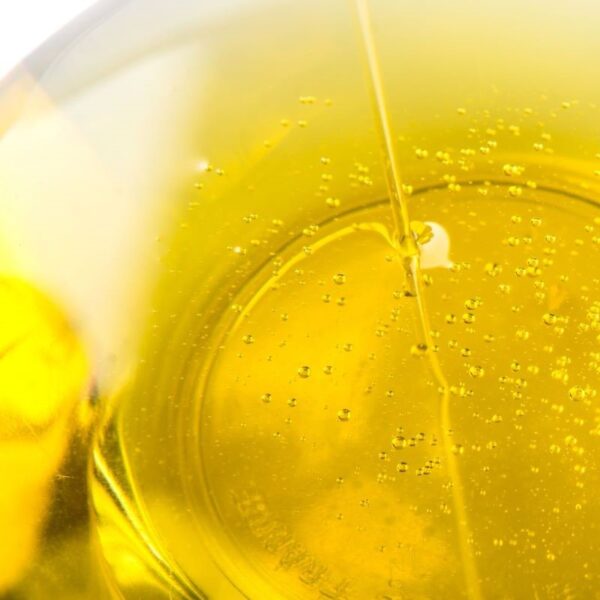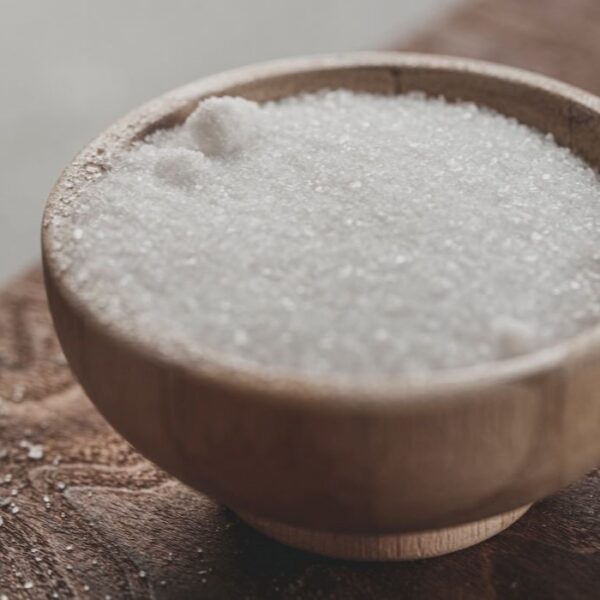Fumaric acid is a critical compound with vast applications in the food industry. First discovered in the fumitory plant, it belongs to the class of carboxylic acids, characterized by two carboxyl (-COOH) functional groups. Its unique qualities, like stability, sourness, and antimicrobial properties, make it a versatile ingredient for various food products.
Fumaric acid (2-butenedioic acid trans, C₄H₄O₄) derives its name from the fact that the acid is found in plants that belong to the genus Fumaria, a common European herb. Fumaric acid is used as a food acidulant in the food & beverage industry.
This article explores the many uses of fumaric acid in the food industry and its implications on food quality.
What is Fumaric Acid?
Fumaric acid has a chemical formula of C₄H₄O₄. Fumaric acid is the trans-isomer of symmetric, unsaturated dicarboxylic acid; the cis-isomer is maleic acid. It is produced as a colorless, crystalline powder with a fruit-like taste, and it is a weak acid that forms diesters, has low solubility in water, and undergoes additions across the double bond.
Source: Wikipedia
Due to its sourness, fumaric acid is used as a flavoring agent and has anti-microbial properties. It is a dry, white or nearly white crystalline powder or granule with a clean, persistent sourness. As mentioned above, fumaric acid was initially isolated from plants belonging to the genus Fumaria.
Production of Fumaric Acid
Currently, fumaric acid is mainly produced by petroleum-based chemical synthesis. Limited petroleum resources, rising oil prices, and heightened environmental concern about chemical synthesis have prompted interest in developing bio-based fumaric acid from renewable resources. Production of fumaric acid through traditional methods is inefficient because of low yield and productivity.
Fumaric Acid Production by Petrochemical Route
Fumaric acid is produced by isomerizing maleic acid from maleic anhydride. Maleic anhydride, in turn, is industrially produced by catalytic oxidation of suitable hydrocarbons in the gas phase. Benzene was the predominant starting material, but oxidation of n-butane or n-butane–n-butene mixtures has become more critical in recent years.
Microbial Production of Fumaric Acid
Fumaric acid production by fermentation was done in the United States during the 1940s, but later, this process was discontinued and replaced by chemical synthesis from petrochemical feedstocks. Fumaric acid production by fermentation using Rhizopus species has been patented occasionally. In 1989, DuPont patented an improved fermentation process producing carboxylic acids (fumaric, succinic, malic, and mixtures) by controlling dissolved oxygen levels between 30 and 80%. In fumaric acid production by fermentation, many aspects determine the fermentation process’s productivity, such as the applied microbial strain and its morphology, the use of a neutralizing agent, and the applied feedstock.
Use of Fumaric Acid in Food
Fumaric acid serves the following functions in the food industry:
| Acidulant | As an acidulant, fumaric acid lowers the pH of food products, aiding in preservation and enhancing certain flavors. |
| Flavor Enhancer | Fumaric acid serves as a flavor enhancer, amplifying the overall taste profile of food products, especially in fruit-based beverages and sour candies. |
| Flavoring Agent | Fumaric acid acts as a buffering agent, maintaining a stable pH in food products, essential for preserving taste and increasing shelf life. |
| Buffering Agent | Fumaric acid acts as a buffering agent, maintaining a stable pH in food products, which is essential for preserving taste and increasing shelf life. |
| Anti-microbial Agent | With its antimicrobial properties, fumaric acid inhibits the growth of harmful bacteria and mold, thus enhancing the safety and longevity of food products. |
Applications in the Food Industry
Fumaric acid is used in the food industry as one of the most common acidulants. It is considered the most potent acid for use in the food industry. Due to its sour taste, it is also used as a flavor enhancer and flavoring agent and controls the final formulation’s pH. It also possesses anti-microbial properties.
Product Examples
| Bakery | Tortilla, Sour Dough, Rye Bread, Biscuit Dough |
| Beverage | Fruit Juice, Nutraceutical Drinks |
| Dessert & Confectionary | Gelatin Desserts, Gelling Aids, Pie Fillings, Candy, Snack Foods, Breakfast Cereals |
| Oenology | Wine, Wine Cocktails |
| Dairy | Chocolate Milk, Cocoa, Eggnog, Condensed Milk, Milk and Cream Powders, Yogurt, Cheese |
Properties of Fumaric Acid
| Chemical formula | C₄H₄O₄ |
| Molecular weight | 116.072 g/mol |
| Density | 1.635 g/cm3 |
| Boiling point | White solid |
| Melting point | 287 °C |
| Solubility in water | 4.9 g/L at 20 °C |
| Acidity (pKa) | pka1 = 3.03, pka2 = 4.44 (15 °C, cis isomer) |
| Magnetic susceptibility (χ) | −49.11·10−6 cm3/mol |
| Dipole moment | Non-zero |
Typical Formulations
Tortilla
This is a typical formulation for a tortilla with fumaric acid:
| Ingredients | Composition (grams) |
| Wheat Flour | 1000 |
| Water | 505 |
| Shortening | 70 |
| Emulsifiers | 5 |
| Baking powder | 15 |
| Salt | 15 |
| Encapsulated fumaric acid | 1.28 |
| Potassium sorbate | 4 |
| Calcium propionate | 5 |
| L-cysteine monohydrochloride | 0.02 |
Sauce
A typical sauce formulation using fumaric acid as an acidulant:
| Ingredients | Composition (grams) |
| Water | 56.3 |
| Soybean Oil | 38 |
| Microcrystalline Cellulose | 1.5 |
| Acetic Acid | 1.3 |
| Mustard Powder | 1.5 |
| Salt | 0.55 |
| Egg Yolk Solids | 0.30 |
| fumaric acid | 0.30 |
| Gums | 0.15 |
| Potassium Sorbate | 0.10 |
Formulation Considerations
Salt of Fumaric Acid
Fumaric acid and its calcium, ferrous, magnesium, potassium, and sodium salts may be safely used in the food industry. Calcium, magnesium, and ferrous fumarate are added to food products to enrich food products with mentioned minerals. Potassium and sodium fumarates are widely used in food products as acidulants and nutrient enrichment.
Isomers
Fumaric acid is the trans isomer of butenedioic acid, while maleic acid is the cis isomer.
Dosage
Fumaric acid is a non-toxic food additive generally used in beverages and baking powders. It is a substitute for tartaric acid and occasionally takes the place of citric acid, at a rate of 1.36 grams of citric acid to every 0.91 grams of fumaric acid for the same taste. It is also an essential ingredient in the manufacturing of candy to add sourness, similar to the way malic acid is used.
Comparison with other Acidifiers
Fumaric acid is principally used in fruit juices and wines. Fumaric acid competes with other acidulants such as citric acid and tartaric acid. Although it is less costly than some alternatives, it has a strong acid taste and low solubility. Fumaric acid often needs additional time to dissolve in a water solution properly. Bartek Ingredients Inc, Ontario, explored the impact of citric, fumaric, and malic acids in a peach mango juice beverage. The higher upfront sweetness was perceived with citric acid, while the maleic or fumaric acid provided a more true-to-fruit flavor roundness. The beverage with fumaric acid was perceived as sweeter and less sour than the other acids.
Effect of Fumaric Acid on Food Products
Since fumaric acid is an acidulant, it provides a sour taste to the food products it is added to and helps in microbial control due to its preserving properties.
pH
The pka Value of fumaric acid is pka1 = 3.03, pka2 = 4.44 (15 °C, cis isomer). As an acidulant, it lowers the pH of the final food formulation providing a sour taste. It also helps preserve the food component as the lowered pH prevents the growth of several microorganisms, improving shelf life considerably. Also, due to this sour fruity taste provided by lowering pH, it is widely used as a flavoring agent and flavor enhancer.
Shelf Life
Acids like fumaric acid act as antimicrobials and help optimize the properties of other preservatives. Fumaric acid is used to lower the pH of bakery products facilitating the more effective use of preservatives. Preservatives used in a bakery product with a pH of 5.5 or higher will not result in the practical extension of shelf life. These finished bakery items may have a short shelf life because less than 10% of preservatives will function at that pH. Using preservatives such as sorbic acid and calcium propionate may be ineffective in bakery systems with high pH. For optimal results, the pH should be below 5.5 to have 50% of the preservatives functioning. In tortillas with a pH greater than 6.0, the product may have a shelf life of 7 to 10 days, even with preservatives.
Sensory Properties
As a strong acidulant, Fumaric acid has a considerably sour taste, changing the flavor profile or enhancing it to a certain extent. It provides a fruity taste to various food and beverage products, and as the most potent food acid, less quantity is required, leading to price savings.
Regulatory Information
Fumaric acid has been designated as Generally Recognised As Safe (GRAS) status by the Food & Drug Administration of the USA. According to section Sec. 172.350 of the FDA, Fumaric acid and salts of fumaric acid can be safely used in the food industry per the following conditions mentioned below:
- The additive should contain 99.5% of fumaric acid by weight, calculated on an anhydrous basis.
- Calcium, magnesium, sodium, and potassium salts of fumaric acid should be 99% by weight in the additive calculated on an anhydrous basis. Ferrous fumarate contains at least 31.3 percent total iron and not more than 2 percent ferric iron.
- Except for ferrous fumarate, salts of fumaric acid, whether used singly or in combination with food, should not exceed the required amount for obtaining the desired effect.
- Ferrous fumarate can be used as a source of iron in dietary supplements if not exceeding the required dosage.
Fun Facts about Fumaric Acid
- Fumaric acid was first discovered in a plant called Fumaria officinalis, commonly known as the common fumitory, smokestack, or earth smoke. Hence, it got its name ‘fumaric’ from the Latin word ‘Fumus,’ meaning smoke.
- Fumaric acid isn’t just found on Earth! This compound has been detected in space. It is one of several organic acids discovered in the Murchison meteorite that landed in Australia in 1969.
- Fumaric acid has an unusual characteristic of an organic compound. Due to the positioning of its carboxyl groups, it has a significantly higher melting point than its isomer, maleic acid.
Additional Resources
- ScienceDirect – fumaric acid
- Food Additives – fumaric acid
- Wikipedia – fumaric acid
- NCBI – Production of fumaric acid
- The Chemical Company – fumaric acid
- ATP Group – fumaric acid
- BYJUS – fumaric acid Formula
- Made-in-China – Magnesium Fumarate Food Grade
- Wikipedia – Calcium Fumarate
- Alfa Aesar – Sodium Fumarate
- Lucknow University – Additives for Beverages (PDF)
- Food Business News – Influencing Fruit Flavored Beverages with Acidulants
- Maxx Performance – Microencapsulated fumaric acid for Shelf Life
- Thirumalai Chemicals – fumaric acid Product Data Sheet (PDF)
- FDA – Code of Federal Regulations Title 21: fumaric acid







